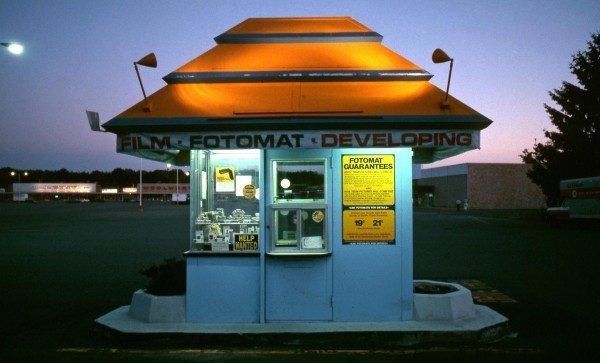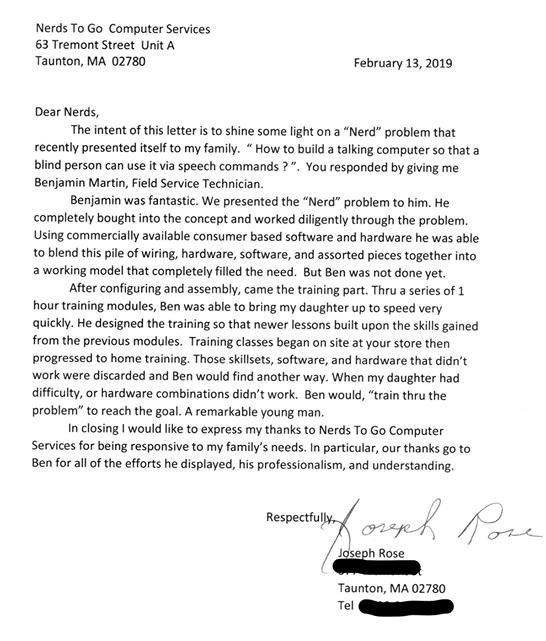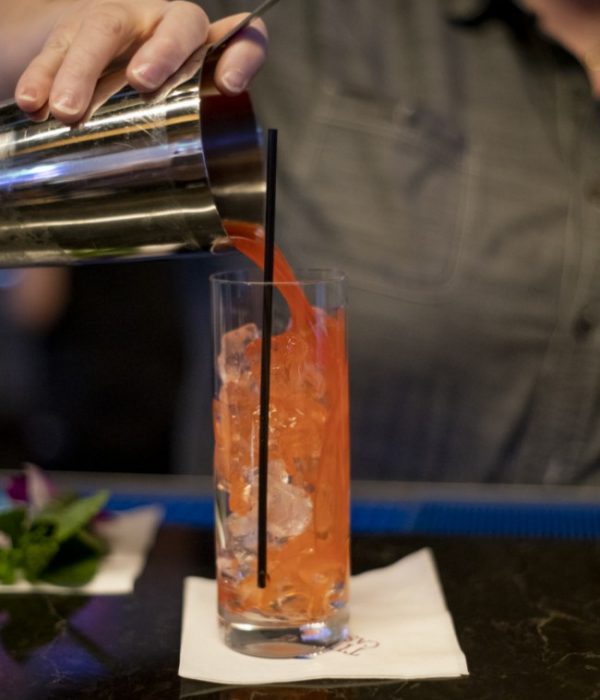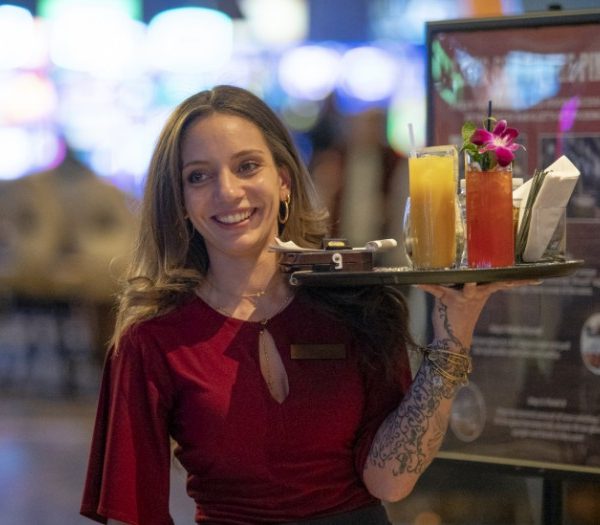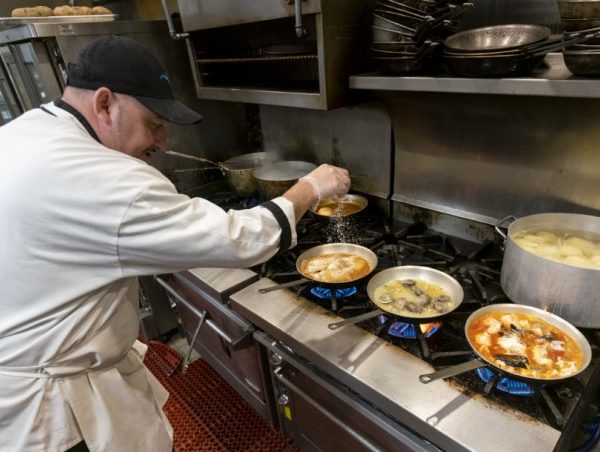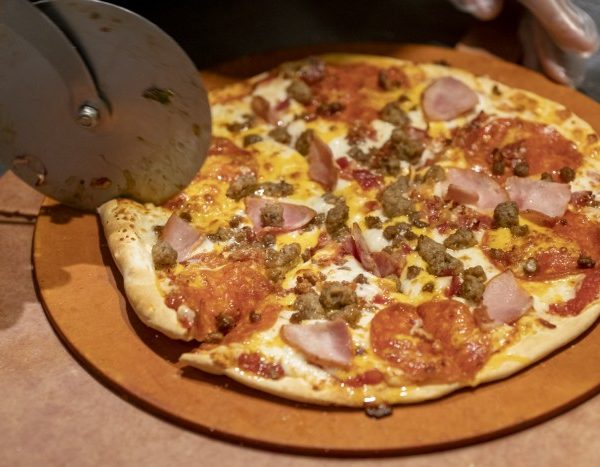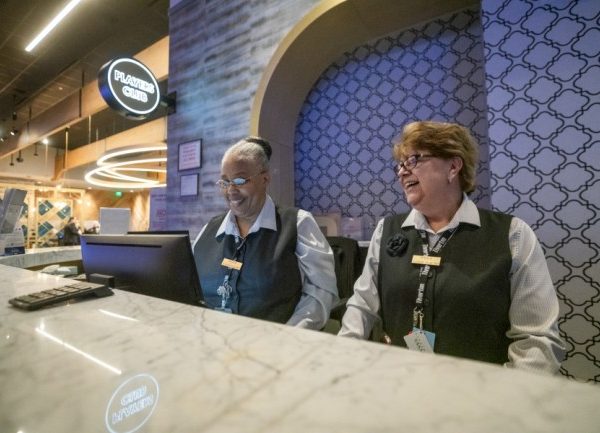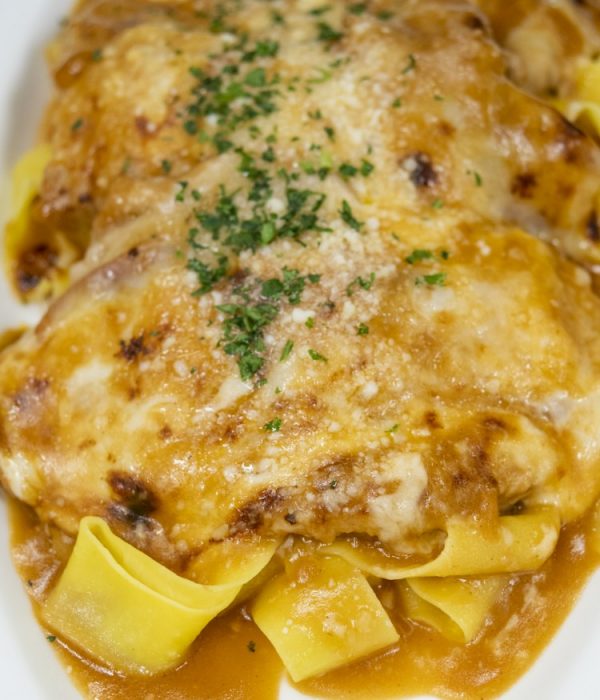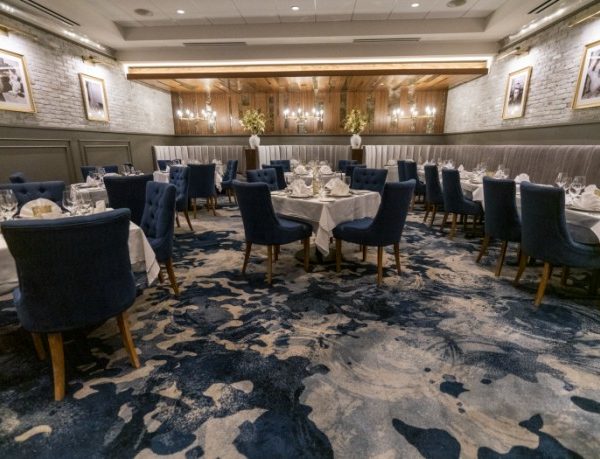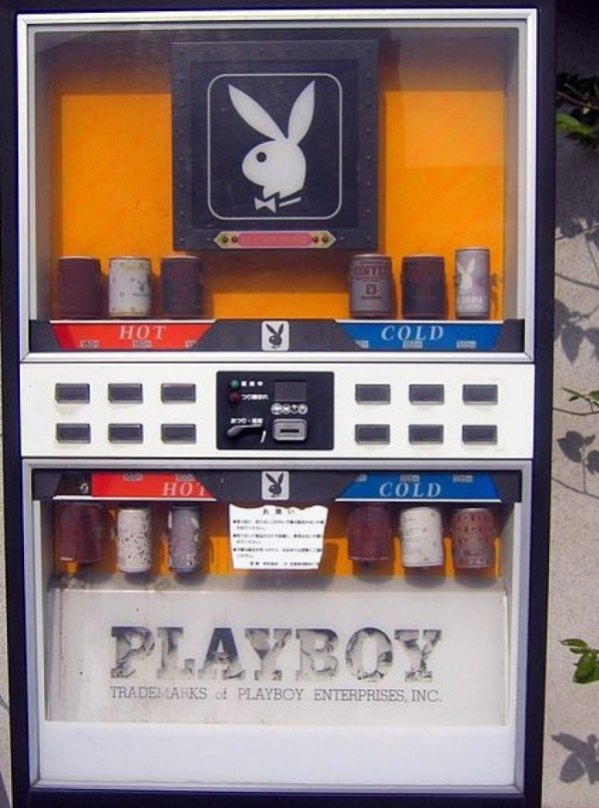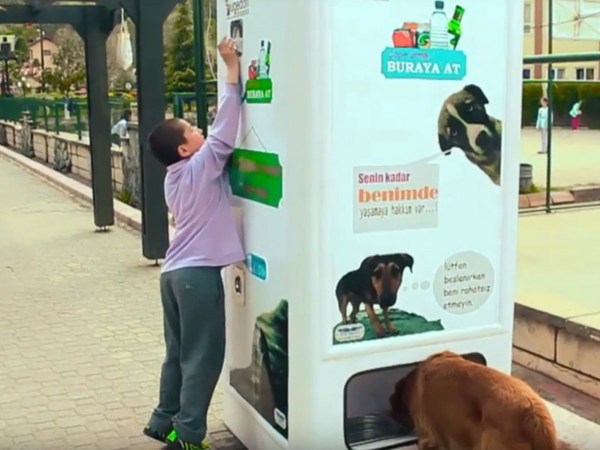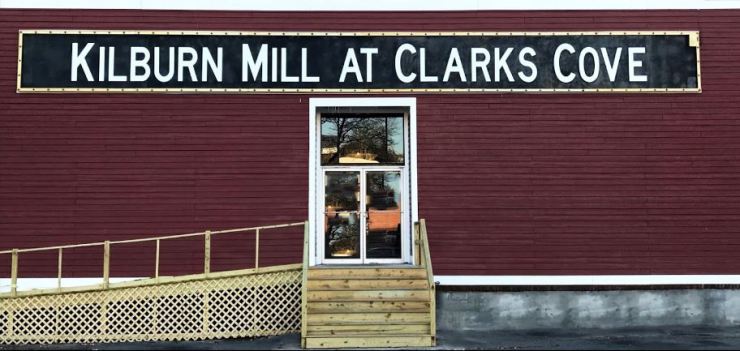Oh, let me count the ways I’ve eaten Italian cuisine.
Being Sicilian I grew up around it and so I had a benchmark based on my grandmother and mom’s cooking – something I used to compare to the dishes and cooking of everyone else, whether that of family, friends, or restaurants. No one did it better than those two – the quintessential characteristics of simple recipes, the freshest ingredients, and balanced proportions were improved with the sheer love that went the dishes.
No matter what anyone says, it is an integral ingredient to a dish that we can taste. From casual and formal, pizza to Ciopinno, and everything from Bruschetta to Cannoli, I’ve had it. Short of actually eating in Italy proper, there is nothing under the sun I have not experienced in the wonderful, delicious Italian foodie world.
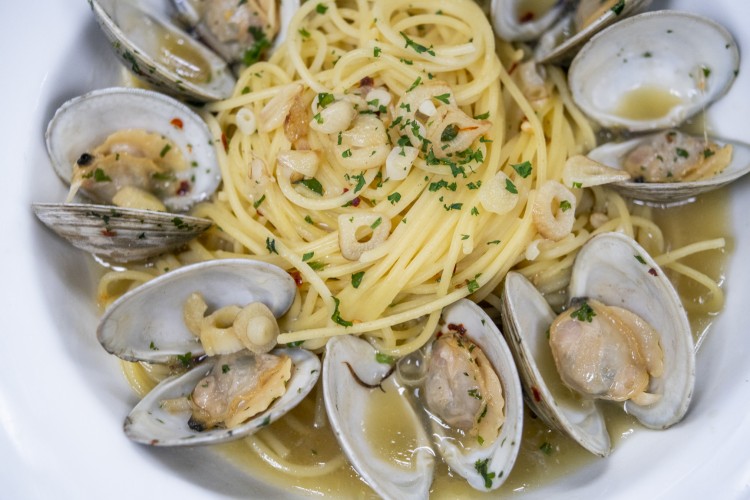
That pretty much sums up most of the world since Italian food is one of the planet’s most popular. Most Americans live within a cannoli’s throw of an eatery, pizza “joint,” or fine restaurant.
The dilemma that Italian food presents is one of saturation. but setting oneself apart from the rest. Trattoria Romana at Twin River Tiverton Casino does just that and even manages to include that key, intangible ingredient of love. While this love is not from nonna or mom, most people don’t have one of those so this is the next best thing.
While on the topic of the next best thing, considering we almost had a casino in the city, this is also the next best thing to that. For those who enjoy sports betting, slots, gambling, etc. the added bonus of the Trattoria being at a casino means you can have a bit of fun before or after – who knows, maybe hit it big or have fun trying. It certainly beats the 90-minute drive to Connecticut and I was shocked at how short of a drive it was.
We Yankees here in Massachusetts are laughed at when we answer the question about how far away a destination is because we don’t respond with how many miles, but that’s because we have a pragmatic lean. So, it is a 15-minute drive from New Bedford- that’s how many “miles” it is. Think of how far of a drive Fall River is and you’ll get an idea.
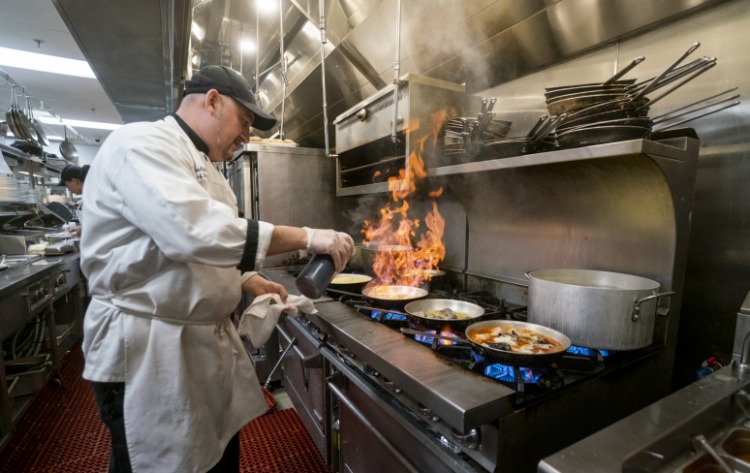
I am not a gambling man and may visit a casino once every few years, but I sure enjoy eating!
You may be thinking “another Italian restaurant! I have foodie fatigue!” Now, hold your cavalli and cool your getti because not all Italian restaurants are created equal and not all Italian restaurants offer the same dishes and in the same way. Beyond the menu, there is also the freshness of ingredients, the quality of service, portions and affordability. That saturation has forced restaurants and chefs to raise the bar. They must stand out and stand out above the rest.
Trattoria Romana does just that.
The first thing that comes across from every single person we interacted with was the genuine pleasure everyone exuded. When a restaurant realizes that their staff is the best asset so they hire people that enjoy what they are doing it translates to a benefit for us, the eater. You want chefs that are inspired when it comes to the menu and what they put on the plate. You want servers who like people, enjoy their job.
That is the aforementioned intangible, key ingredient of love that grandmothers and moms (and dads!) put into every meal. It’s here at Trattoria Romana.
The restaurant itself has a variety of seating areas with an equal variety in lighting to accommodate each customer’s desire – whether eating alone, as a couple or a group or because you want a romantic intimate setting or something less formal. An absolutely gorgeous dark wood and glass wall is filled with an astounding array of wine varietals. If you are like me, a self-proclaimed Oenophile, it’s love at first sight. What I love about the display is being able to see all the wines in their glory as opposed to some dry text on a menu. If you know your wines, you will likely recognize many labels.

Vintage black and white images of quintessential Italian celebrities decorate the walls and breathe life into the blending of real stone and brick with hues of dark wood. A sort of modernized rustic ambiance.
That sort of traditional meets the new is reflected in the menu and dishes. No, that doesn’t mean lasagna fois gras, spaghetti with sea urchin Bolognese, or some other obnoxious idea of fusion. When it comes to Trattoria Romana it translates into a healthy respect and admiration for tradition but makes subtle improvements where possible.
Lest you think the chef isn’t qualified to do such a thing, and only an Italian should be allowed to do so: Chef Luciano Canova was born in on a small farm just outside of Rome, Italy where the entire household was cooking. He then attended the prestigious Culinary Institute of Italy in Copanello, Province of Catanzaro before cutting his “teeth” working all around the world including Switzerland, Germany and on a luxury cruise line. You may even bump into Luciano in the dining room greeting customers.
Three traditional aspects that stood out as we all bit into all the food were proportion, quality and freshness. I look at highly-salted food as a sign of a chef’s inability to trust his cooking or it’s to disguise the poor quality of the ingredients.
Every dish that came out bursting with the flavor that only fresh ingredients can give. Salt was an element that was properly utilized to compliment those fresh ingredients and bring out the flavors. Same goes for all the ingredients, not just the salt. I hate to sound pithy or use a tired cliche, but I get it when people say “It’s a symphony in every bite.” Every “note” in its proper place, no section trying to drown out the others. What a breath of fresh air.
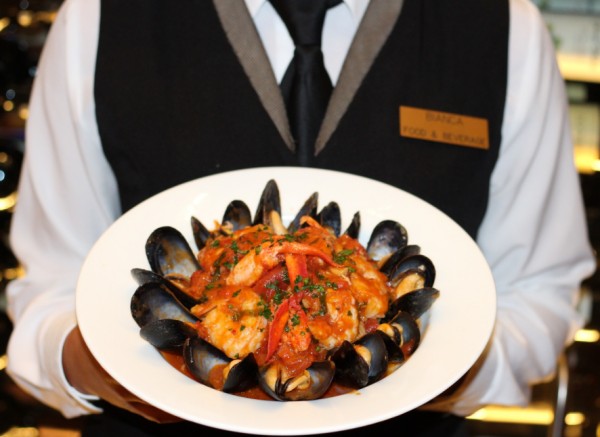
We placed our trust in the kitchen and asked the knowledgable waitress choose all the dishes for us. We wanted to be taking along for a ride.
We started with two salads: first the Insalata Alla Greco ($6.95) – chopped Romaine, beefsteak tomato, cucumber, red onion and Kalamata olives dressed with red wine vinaigrette, croutons and feta cheese. Fresh, fresh, fresh. The vegetables had snap, the vinaigrette was clearly made from scratch, the croutons made in house. How was a meal-sized salad this good at $6.95? È incredibile!
Then was the Prosciutto e Mozzarella Smoked mozzarella cheese wrapped with imported Prosciutto di Parma lightly sautéed served with artichoke hearts, black olives, cubanito finger peppers stuffed with prosciutto & sharp provolone served over mixed greens with extra virgin olive oil ($12.95). Also a meal-sized portion and absolutely loaded.
Don’t run away scared meat lovers. There is a special room and special menu just for you, the Tuscan Chophouse, with offerings of steak, chicken, veal and seafood. We got a few dishes from that menu. Next came the Bocconcini Della Non al Vin Santo which is a chicken breast stuffed with fresh mozzarella cheese, imported baby porchetta and fresh sage sautéed in a Vin Santo and sherry wine demi-glaze with button mushrooms served over parmesan risotto and finished with Parmigiano-Reggiano. Oh my. You will never look at chicken breast the same way again.
From the Carne section came the Vitello Saltimbocca is veal medallions topped with imported Prosciutto di parma, mozzarella cheese and fresh sage pan-seared in a marsala wine sauce and served over pappardelle pasta finished with Parmigiano-Reggiano and the Controfiletto Di Manzo Alla Romana : Sirloin steak topped with white button mushrooms sautéed with extra virgin olive oil, fresh lemon juice, garlic & oregano served with mashed potatoes & vegetable.
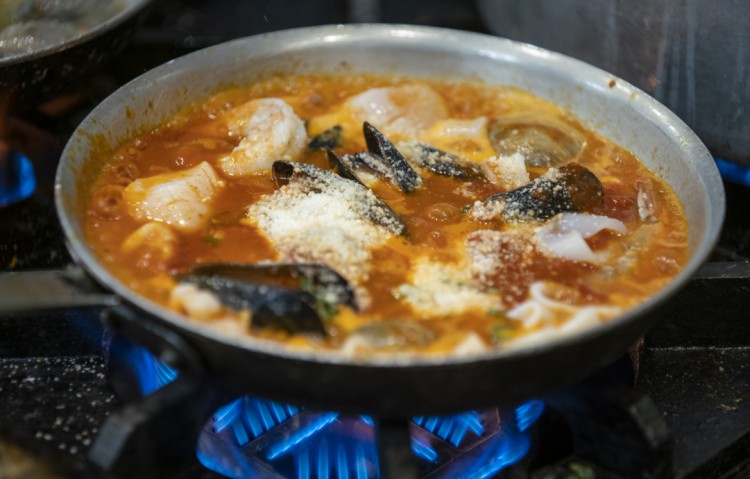
Now Mike, Josh and Leo will lie here if you ask them. They will deny that there were tears in their eyes while ravishing the veal and sirloin and blame it on the kitchen chopping onions in the back. The dead giveaway will be their eyes welling up again as they relive the memory, so put them on the spot.
From the Chicken section came a all-time favorite of all Italian foodies, the Pollo Marsala -chicken breast sautéed with button mushrooms and a Marsala wine demiglaze for a sweet flavor and caramel color, served over capellini pasta. This was without a doubt the best, robust, savory Marsala sauce I have ever had. It was art on a plate.
The seafood selections started with a classic, the Spaghetti alla Vongole Veraci pasta sautéed with fresh littleneck clams (available in either a light marinara sauce or a garlic & white wine sauce) with Italian parsley & red pepper flakes. A generous amount of sweet, tasting of the sea, littlenecks and accompanied with a balanced garlic and white wine sauce that got me wondering what else I could put the sauce on. Pretty much anything and everything.
The coup de gras was a world-class Frutti di Mare Posilipo of Cappellini pasta in garlic & olive oil San Marzano marinara sauce sautéed with tender calamari rings, jumbo shrimp, sea scallops, littleneck clams & PEI mussels finished with Parmigiano-Reggiano cheese. Eat at any Italian or Sicilian house and you will find out quickly the meaning of abbundanza or abundance. Ask for a snack, get a feast. Tell mom you are just going to the beach with two of your pals on a lazy Wednesday during summer school vacation and she will spend 4 hours in the kitchen making salad, soup, sandwiches, pasta, and dessert. True story.
Well, this Frutti di Mare Posilipo was a large plate of pasta and heapings of fresh seafood, and lots of love and abbundanza!
For dessert we ordered the Chocolate Mocha Truffle Cake ($6.95): Chocolate cake layered with a mocha truffle butter cream icing, drizzled with rich chocolate ganache. So delicious that we felt guilty for no reason. “I didn’t do anything to deserve this.”
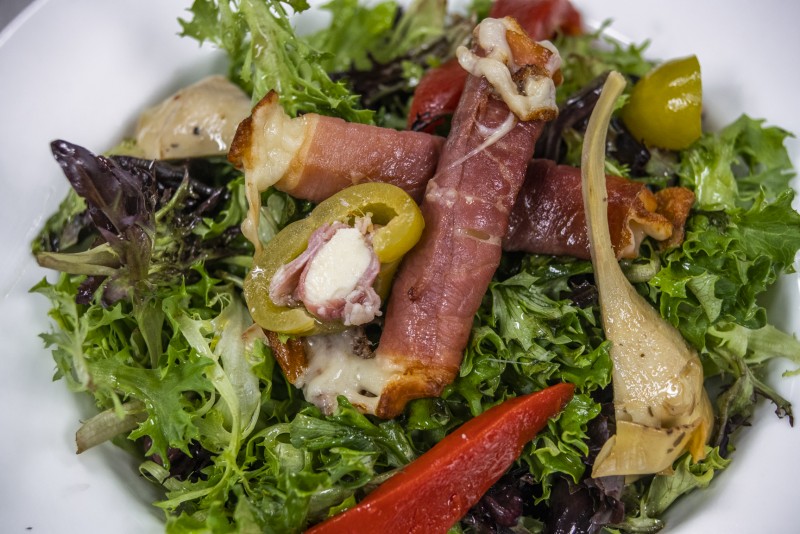
If you are less trusting than we are. you have a full menu at your disposal. The menu at Trattoria Romana depends on whether you are there for lunch or dinner and, each season comes with special offerings. Because of this, I will just give you an idea of the regular lunch menu, but you can click on all the links provided to see the dinner menu, dessert menu, and seasonal menus.
The lunch menu offers traditional antipasti, soups and salads like Calamari Fritti, Mozzarella Caprese, Pasta E Fagioli Soup, and Pollo Caesar Salad but had some original dishes like the Sicilian Chicken Wings (Caramelized onions, rosemary and balsamic).
For the “main” you can choose between 9 Types of Panini or sandwiches from Chicken/Veal Parmesan, Meatball Alla Corinna, Tuscan, to Rabe & Sausage or a half dozen Pasta dishes (Pasta is made fresh daily) like Fettucine Alfredo, Spaghetti e Pollo Genovese, and Pappardelle alla Bolognese. Want fewer carbs or just a meat lover? There are three types of Black Angus burgers, five chicken dishes, and five types of veal dishes.
If you are in the mood for a “power” lunch you can complement the meal with either traditional cocktails like Amaretto Sour, Negroni, Bellini and Aperol Spritz or one of their dozen Signature Cocktails like Blueberry Bourbon Buzz (Bulleit Rye Bourbon, Luxardo Amaretto, Blueberry Puree, Fresh Lemon Juice, Simple Syrup, Fresh Blueberries), Watermelon Cucumber Punch, Trattoria Romana Bloody Mary, or Trattoria Housemade Sangria (Italian Wine, DeKuyper Triple Sec, fresh fruits, our own special ingredient. Love.) Non-Alcoholic sodas are offered – give the Black Cherry Soda (Black Cherry, Fresh Lime, San Pellegrino Sparkling Water.) a try!
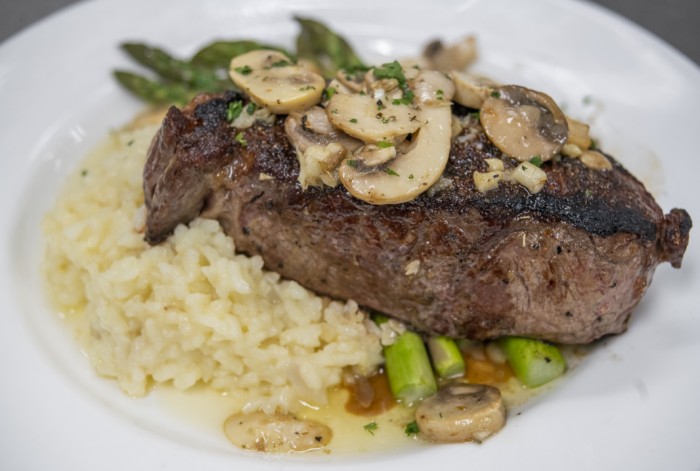
The Dinner Menu is in essence larger portions of the lunch menu with a few extra dishes plus a Seafood Section and for Carne section for you steak lovers.
The Drink and Dessert Menu offers a head-spinning variety of wine, cocktails, beers, whiskey, Scotches, Rums, Liquors, and more.
Desserts? Oh, yes. Chocolate Mocha Truffle Cake, Homemade Biscotti, Tiramisu, Coppa Raspberries & Cream, Cannoli Duo (for two, but who are they kidding? Two cannolis are a serving of one for me!), Triple Layer Spumoni Cheesecake, and of course, Italian Gelato.
You can finish the meal off with something from the Espresso Bar: Espressos, Cafe Americano, Cappuccino, Caramel Macchiato, Chocolate Macchiato, Coffee or assorted Teas.
What is most mind-boggling of all? Not the superb dishes offered, the capable, attentive service, “wall of wine,” and attention to detail…it’s how affordable the whole experience is. You get a Michelin star experience without the Michelin star price. There are 20 dishes on the menu that are under $20, many entrees in the $10-$14 range, drinks starting at $5.75 and all desserts under $7.
It’s not easy to improve upon tradition and would typically be arrogant to make such a claim. However, there is a tiny part of the population that has the ability and confidence to actually be able to do that. You don’t do that by tossing lobster into your Bolognese sauce, adding prosciutto and truffles to a pizza, or making Alfredo Mac & Cheese, you do that by doing what Trattoria Romana is doing.
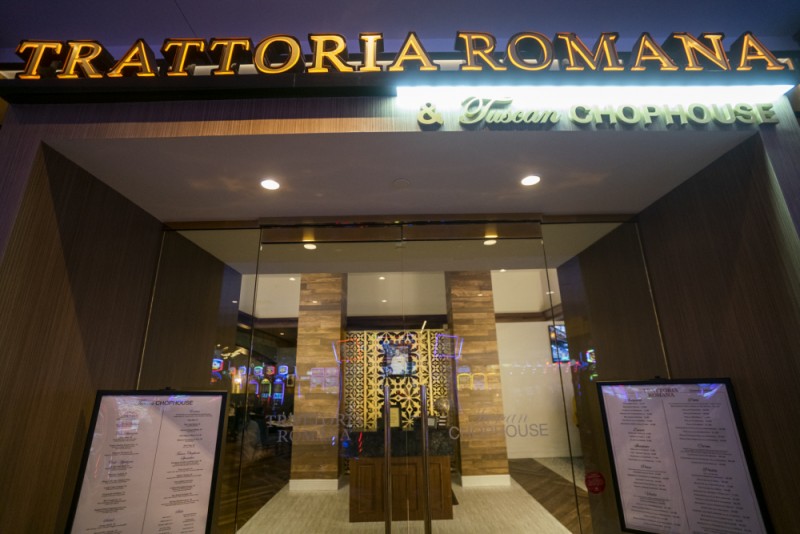
__________________________________________________________________
Trattoria Romana at Tiverton Casino Hotel
777 Tiverton Casino Blvd
Tiverton, Rhode Island
Phone: (401) 816-6165
Lunch Daily: 12:00 Noon–4:00pm
Dinner: Monday–Thursday & Sunday 4:30pm – 9:00pm
Friday & Saturday: 4:30pm – 10:00pm
Facebook: facebook.com/TrattoriaRomanaTiverton/
Website: https://www.twinrivertiverton.com/trattoria-romana/








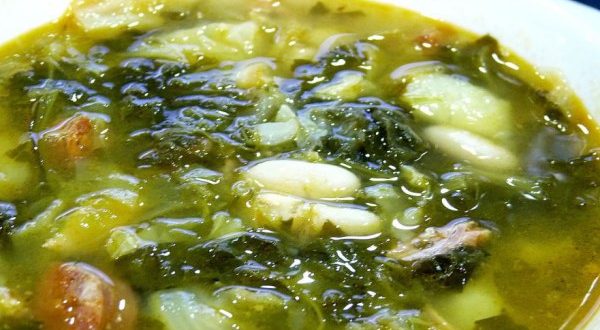


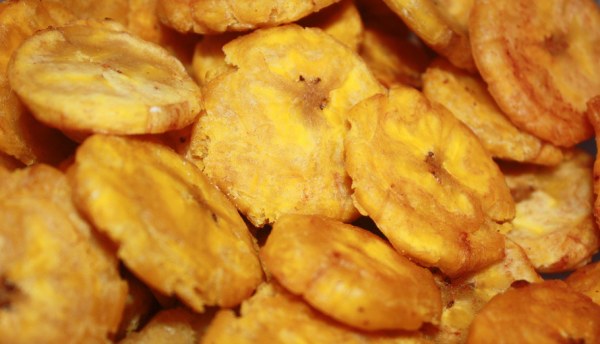

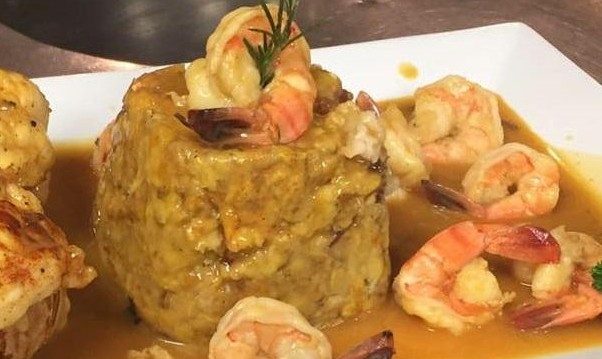


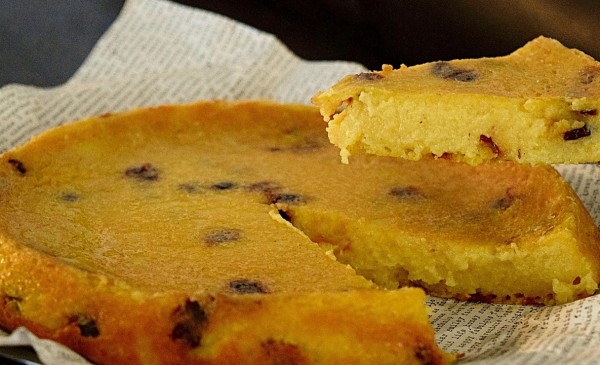

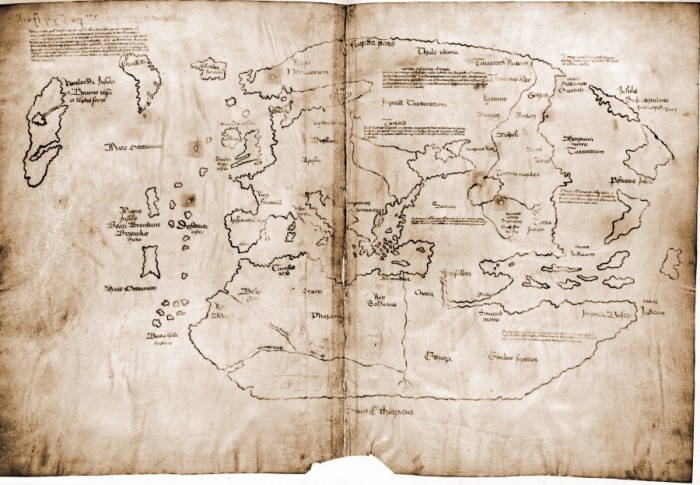 The map that Gosnold utilized to help navigate the New World.
The map that Gosnold utilized to help navigate the New World. Vinland and Lief Ericksson’s routes. Photo by Donald Weidman.
Vinland and Lief Ericksson’s routes. Photo by Donald Weidman.










